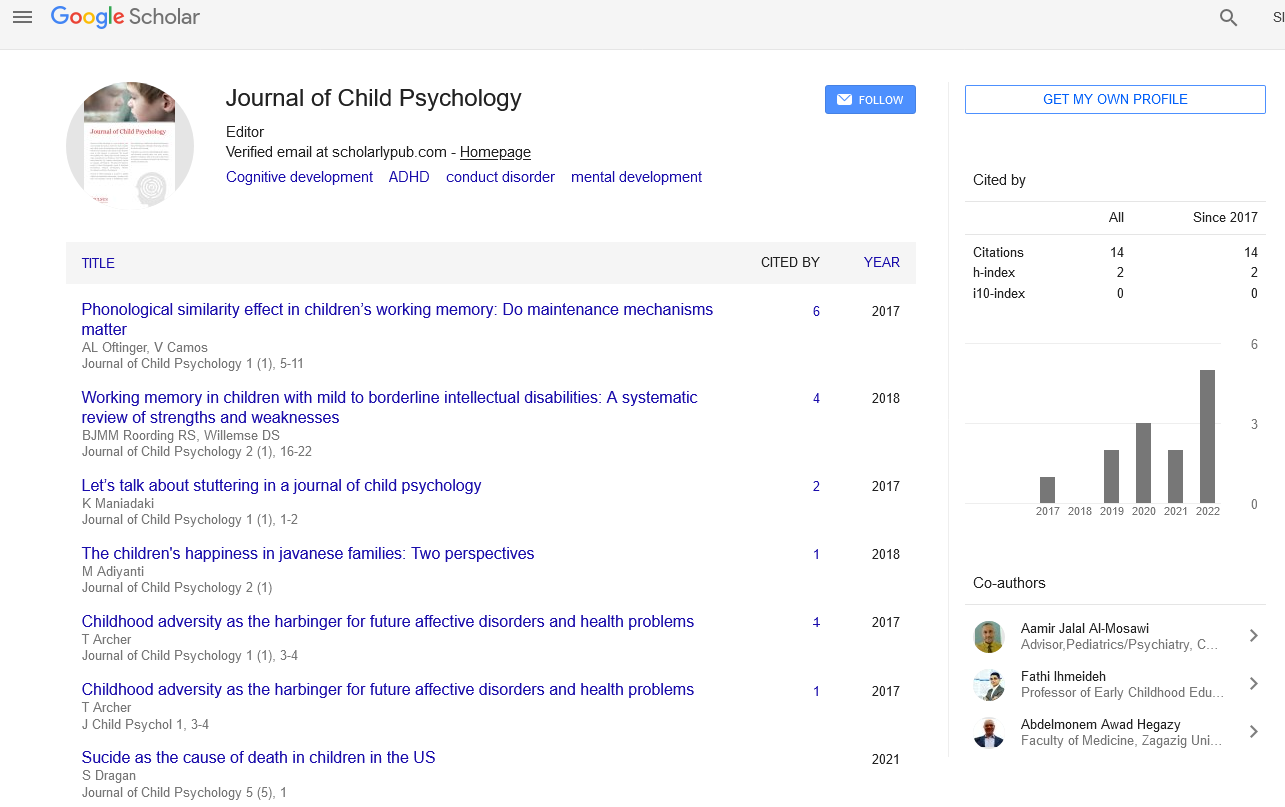Mood Disorders and their Symptoms in Children and Adolescents
Received: 05-Jan-2022 Accepted Date: Jan 18, 2022; Published: 28-Jan-2022
This open-access article is distributed under the terms of the Creative Commons Attribution Non-Commercial License (CC BY-NC) (http://creativecommons.org/licenses/by-nc/4.0/), which permits reuse, distribution and reproduction of the article, provided that the original work is properly cited and the reuse is restricted to noncommercial purposes. For commercial reuse, contact reprints@pulsus.com
Introduction
Mood disorders, sometimes called as affective disorders are a group of mental health problems including depression, bipolar disorder mostly thee common side effects of children suffering with Attention Deficit Hyperactivity Disorder (ADHD). Normally every child feels low, discouraged and depressed occasionally at some point in their life. But the child suffering with mood disorders often feels low, discouraged and depressed most of the time. The commonly found mood disorders in children include Major depression, Persistent depressive disorder (dysthymia), Bipolar disorder, Disruptive mood deregulation disorder, Pre-menstrual dimorphic disorder, Mood disorder due to a general medical condition and Substance-induced mood disorder.
Major depression is marked by the constant depressive or irritable mood, marked by a loss of interest in the surroundings, playing with toys, trouble socializing with friends, thoughts of suicide and self-destruction ideas. This type of mood disorder arises in children from the family dysfunction or parent’s divorce issues or by apparently from no cause. Persistent depressive disorder (dysthymia) is a condition of low-grade depression with persistent irritability in a state of de-moralization and is chronic in nature. This condition lasts for one year. During this disorder the child might experience poor appetite, low energy, feelings of hopelessness, insomnia, low self-esteem and difficulty making decisions. Bipolar disorder is characterized by the extreme emotional instability of the child with stages of extreme elation (happy mood) followed by a sudden state of depression or no response.
The symptoms of bipolar disorder coincide with that of the symptoms of Attention Deficit Hyperactivity Disorder (ADHD) and the physician suggests for the diagnosis of ADHD for a bipolar disorder diagnosed child. Disruptive mood deregulation disorder is characterized by a child’s persistent irritability and grouchiness. Occasional temper is a normal behavior of the growing child. In this disorder phase the child exhibits chronic, intense and ongoing anger or temper tantrums. This disorder occurs mostly in boys rather than girls. The child faces a hard inability to control his or her impulsive behavior. Pre-menstrual dimorphic disorder mostly occurs in girls where they face irritability, depression and uneasiness before menstrual periods.
Mood disorder due to a general medical condition is caused by the fear and worries regarding a chronic disease condition that triggers depression. Substance-induced mood disorder occurs due to the abuse of drugs or due to the side effects of certain medication or extreme exposure to toxic materials. The cause of mood disorders include imbalance in Neuro transmitters in the brain, unexpected loss of dear ones, childhood sexual abuse, physical and verbal abuse, chronic stress, family dysfunction, poor socio-economic condition of the family and family genetics. Symptoms include ongoing feelings of sadness, low self-esteem, feelings of wanting to die, a drop in energy, running away or making threats of running away from home, feelings of despair, helplessness, or guilt, sleep problems, such as insomnia, rebellious behaviors, poor performance in school, suicidal thoughts or attempts, sensitivity to failure or rejection. Treatment is customized to every unique child and it will be a combination of medicines, family therapy psychotherapy which includes cognitive behavioral therapy and interpersonal therapy.





